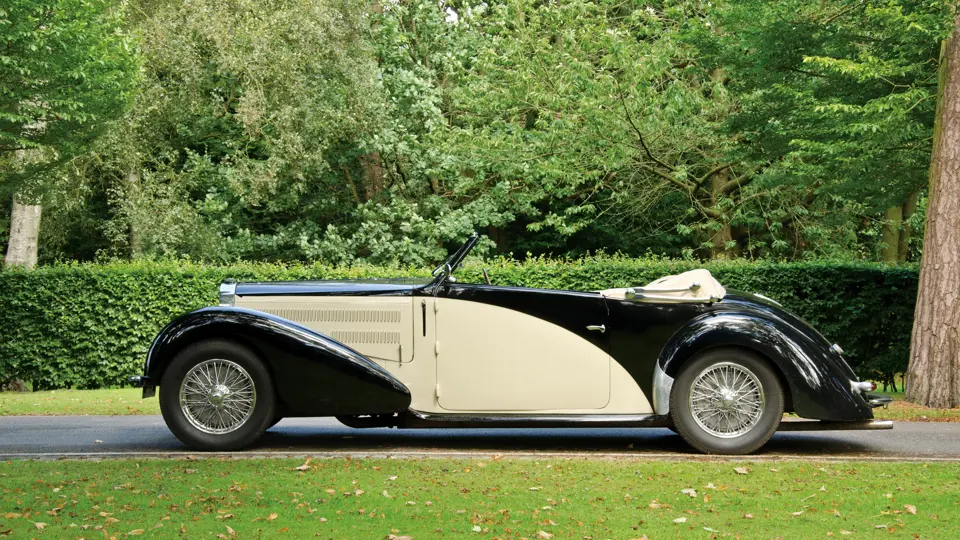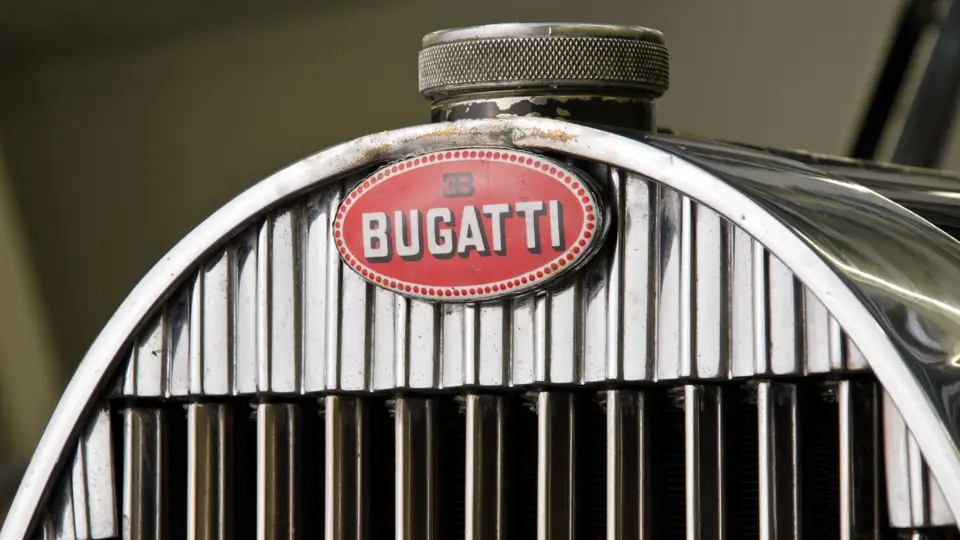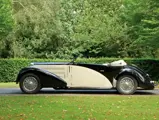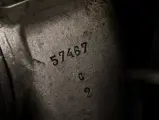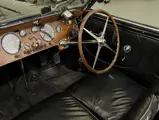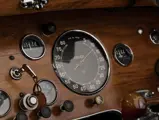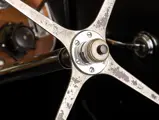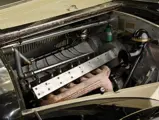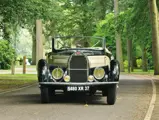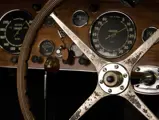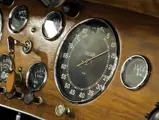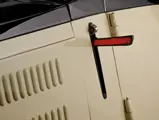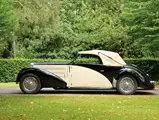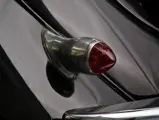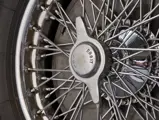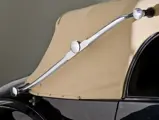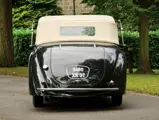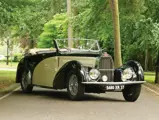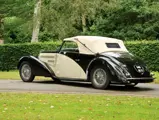Please note that this car is sold with a French registration certificate as well as a UK MOT certificate valid until September 2013.
160 bhp, 3,257 cc dual overhead cam inline eight-cylinder engine, single updraught Stromberg UUR2 carburettor and Roots-type supercharger, four-speed Cotal gearbox, solid front axle with semi-elliptic leaf springs, live rear axle with quarter-elliptic leaf springs, and four-wheel mechanical brakes. Wheelbase: 130 in.
• The first customer-ordered and delivered Type 57C
• Beautiful, original example
• Sensational mid-production Stelvio coachwork by Gangloff
• Jean Bugatti’s most celebrated road car
• Only four owners from new; one owner for 40 years
Few figures in the history of automotive design, manufacture, and motorsports loom larger than Ettore Bugatti, the Italian-born engineer who founded a legend with his factory-estate in Molsheim, Alsace. One of the early-20th century vanguards of racing and design, Bugatti was an innovator whose cars routinely racked up Grand Prix wins, forging a reputation as an industry leader in both technical development and aesthetic styling.
But as fantastic as Le Patron’s early Brescia and succeeding Type 37 and Type 51 race cars were, the automotive wizard’s road cars were no less impressive, demonstrating subtle elegance in models like the Type 46, as well as sheer prodigious size and power as with the gargantuan Type 41 Royale. Of all of Molsheim’s road cars, however, none have enjoyed such universal acclaim as the Type 57, which was largely designed and engineered by Ettore’s son, Jean Bugatti. First appearing in 1934 as a replacement for the Type 49, the Type 57 featured a new 3.3-litre twin-overhead cam inline eight and an assortment of beautiful factory coachwork choices.
Working from a palette of numerous sketches he had penned for bodywork, Jean Bugatti initially approved a four-seat coupé, dubbed the Ventoux, and a four-door saloon, the Galibier. Both were named for locations within the Alps, bestowing the cars with an extra measure of grandeur. Eventually Jean also approved two sportier bodies made in far more limited quantities, a two-seat coupé called the Atalante and the highly celebrated Atlantic, which is generally regarded to be the most valuable collector car in existence. While all of these Type 57 bodies were constructed at Molsheim, customers could, as per the regular practice of the day, order a rolling chassis to be clothed with bodywork from the coachbuilder of their choice.
On paper, Jean Bugatti’s line-up of Type 57 factory bodies possessed one glaring omission, that of any open coachwork. For this purpose, Jean designed a handsome cabriolet entitled the Stelvio, yet another Alpine reference. In all likelihood, lacking the capacity to take on production of all of these bodies simultaneously due to labour problems which beset Molsheim infrequently during the 1930s, Bugatti contracted the production of the Stelvio to Gangloff, a coachbuilder located in nearby Colmar. Thus, Type 57 chassis would be delivered to Gangloff for Stelvio coachwork, often driven to Colmar by employees, such as the famous works driver Rene Dreyfus, as mentioned in his account in My Two Lives.
In addition to offering this fabulous selection of coachwork, the Type 57 also eventually became available in several upgraded mechanical variations, including the high-performance short-chassis Type 57S, as well as a supercharged version dubbed the Type 57C. The 57C engine made its first appearance at the 1936 Paris Salon, installed in a Ventoux, and was soon available on the improved second-series Type 57 chassis that appeared in late-1936. Adding considerable power and improved performance, the Type 57C is still regarded as one of the best all-around touring Bugattis ever built, and it remains the apogee of the Bugatti road car legend. Within a few years, Jean was tragically killed during a testing accident, and the onslaught of war just a few months later all but destroyed the Bugatti concern. Fortunately, the remaining Type 57 examples emphatically testify to the heights of craft achieved by the legendary Molsheim firm.
Chassis number 57467 was constructed during November 1936, in fulfilment of a customer order placed on 7 October. The purchaser was Dr Jacques Kocher, of Valance, a preferred Bugatti client who placed his order at the Bugatti stand at the Paris Salon between 1–11 October, where the Type 57C was then publicly débuted. The chassis was delivered to Gangloff on 8th January 1937, slated for Stelvio coachwork, which during this period included faired-in headlamps, ribbed front wings, and the curved style line that dramatically drops from the top of the front edge of the door to the lower rear corner.
Chassis 57467 claims a significant mechanical superlative, in that it features just the second supercharged Type 57 engine built, number 2C. As engine number 1C was equipped in the Ventoux that served as the show car demonstrator at the 1936 Paris Salon and was therefore initially a works car of sorts, 57467 is actually the very first Type 57C ordered and delivered to a private customer, an important benchmark amongst Bugatti road cars; it is, furthermore, one of just three supercharged examples constructed in 1936.
Following the completion of coachwork at Gangloff on 28th January 1937, the Stelvio was transported to the company’s agent in Lyon, Pierre Monestier for delivery to Dr Kocher, then the head surgeon at a hospital in Valance, which is situated roughly 60 miles south of Lyon on the Rhone River. Dr Kocher was well known to the accountants at Molsheim, having ordered no fewer than fourteen different Bugattis between 1925 and 1939. In fact, Dr Kocher ordered a second car on the same day at the Paris Salon, a Type 57S Atalante, which was delivered to him in tandem with this Stelvio on 9th February 1937.
Chassis 57467’s second owner of record was Bernard Delbreil-Berges, of St. Lizier in south-western France, not far from the Andorra border. It is likely that Mr Delbreil-Berges acquired the car no later than the period immediately following Dr Kocher’s passing, in September 1956, and records reflect that he still owned the car as late as 1997, suggesting that 57467 enjoyed the consistent care of one conservator for over 40 years. It is believed that this exceptional Type 57C passed through one more owner before being acquired within the last several years by a well-known collector in the UK.
This example has been judged to be a remarkably original example of the Type 57C Bugatti retaining, as far is known, all its major mechanical components and its original coachwork. The only two significant mechanical upgrades made to 57467 are both period developments that were standard to the series three cars that began production in late-1938. Specifically, these modifications include the implementation of hydraulic brakes and rear telescopic shock absorbers, for better overall performance. These upgrades were, in all likelihood, conducted relatively early in the car’s life, meaning that 57467 has been largely unaltered for decades and is an extremely authentic and original example.
Currently, it is in well preserved, unrestored condition and is exhibiting symptoms of sparing use for a number of years. Chassis 57467 is a highly original, four-owner, numbers-matching Type 57C that was equipped with just the second supercharged 57C engine constructed, a point of considerable significance. This beautiful and particularly rare Stelvio offers an unusual opportunity to purchase an indelible piece of the Bugatti legend, one of Jean Bugatti’s original masterpieces, and will surely be welcomed at discriminating concours and vintage Bugatti events everywhere.

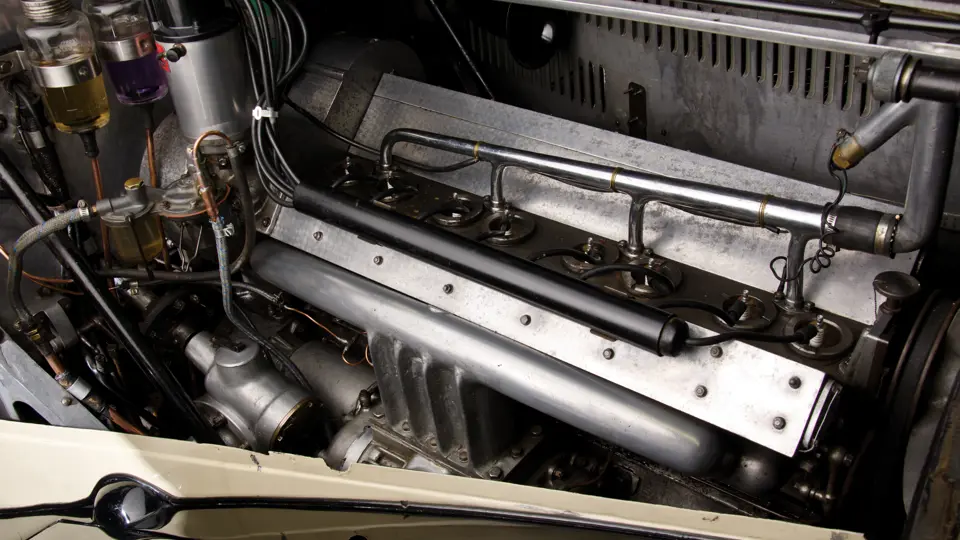


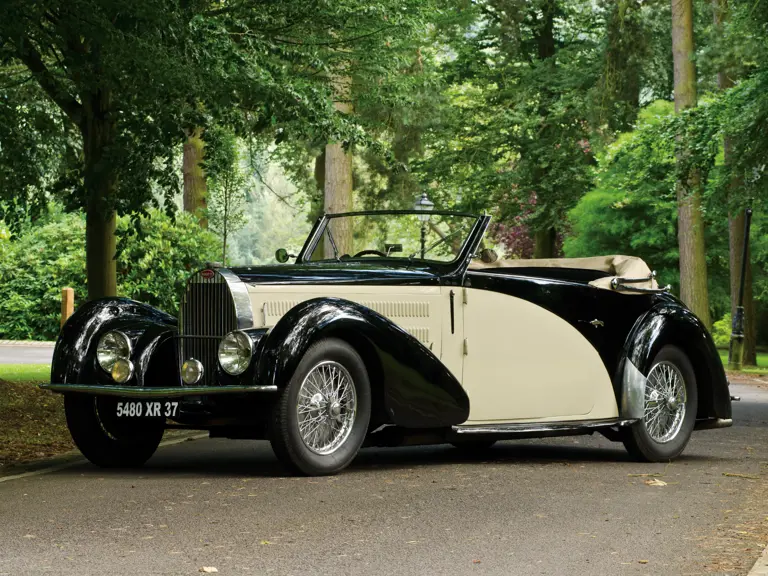
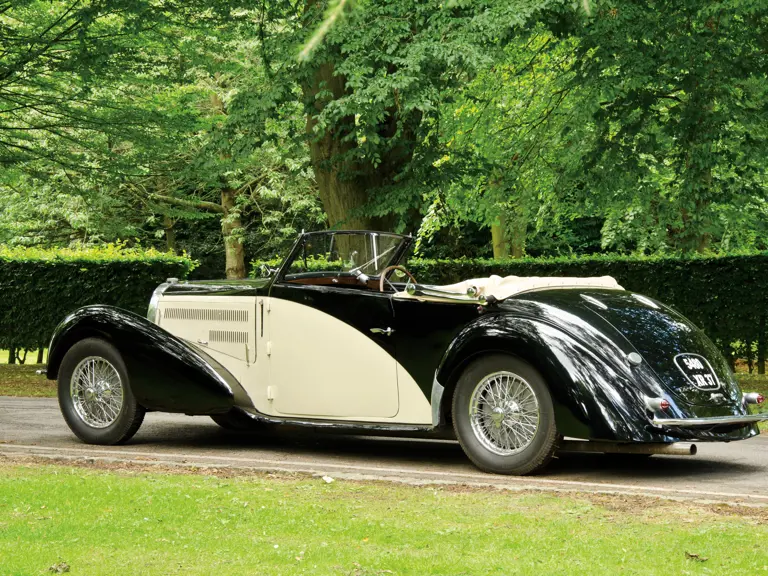
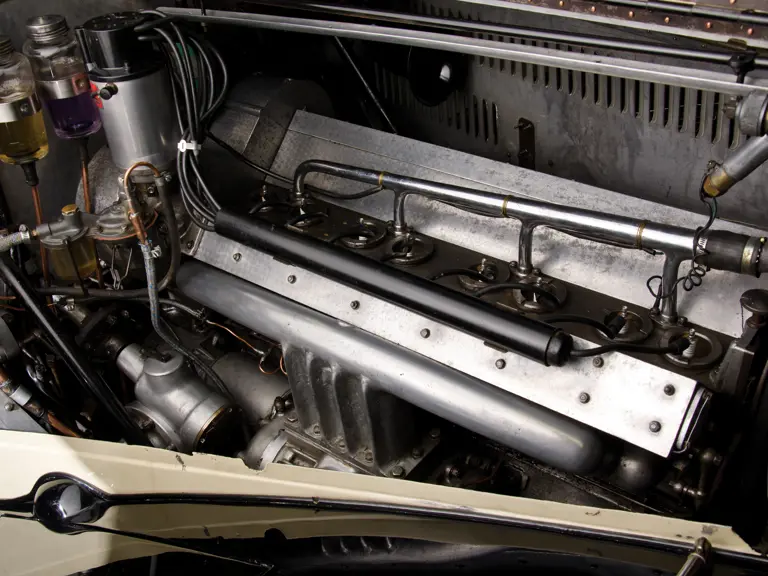
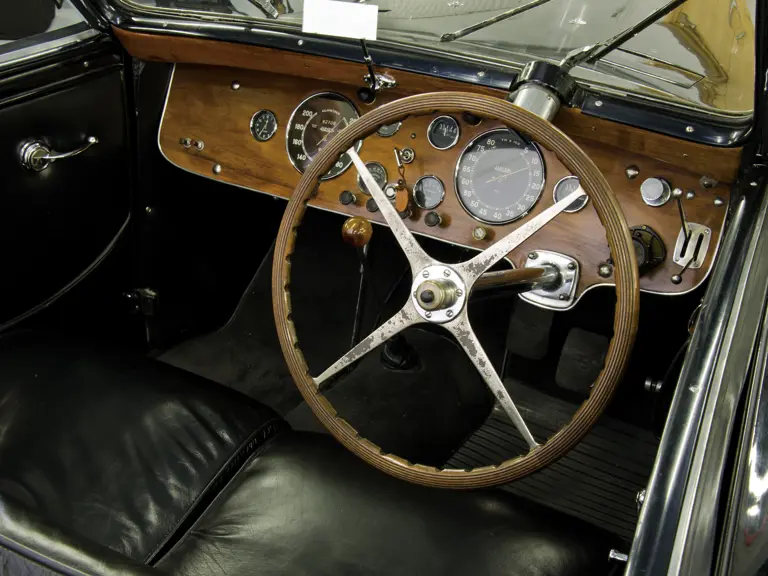
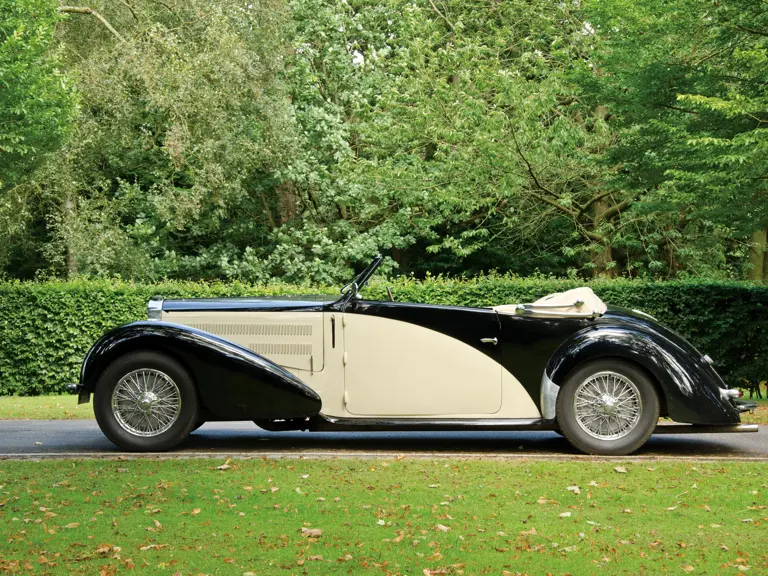
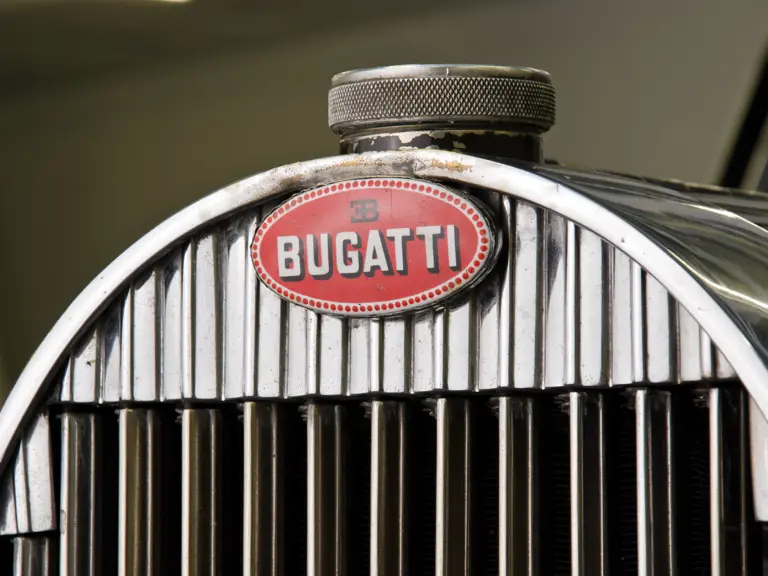
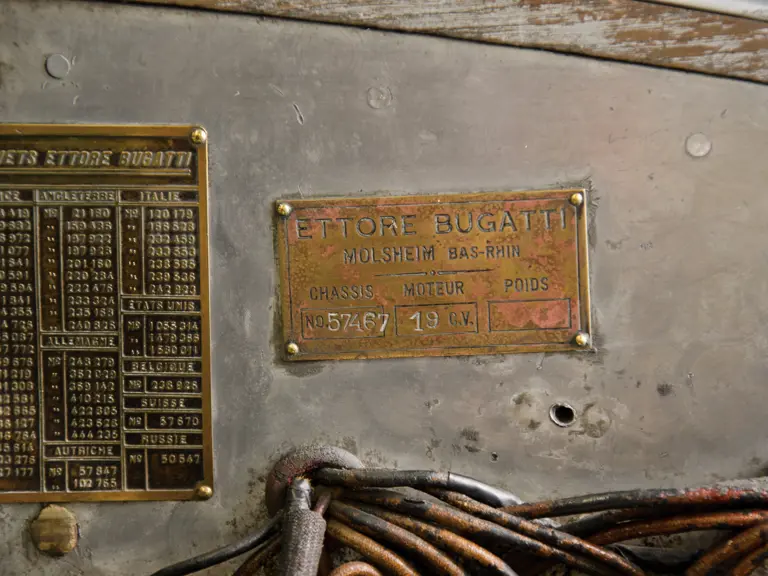



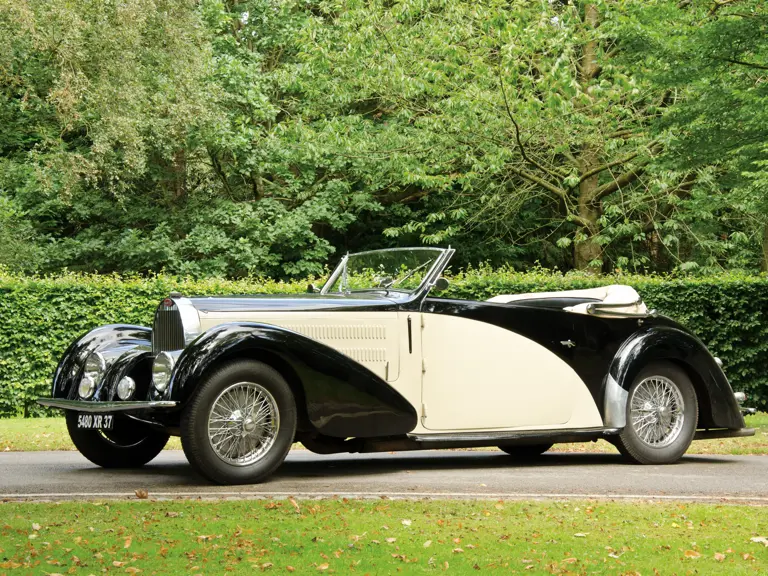
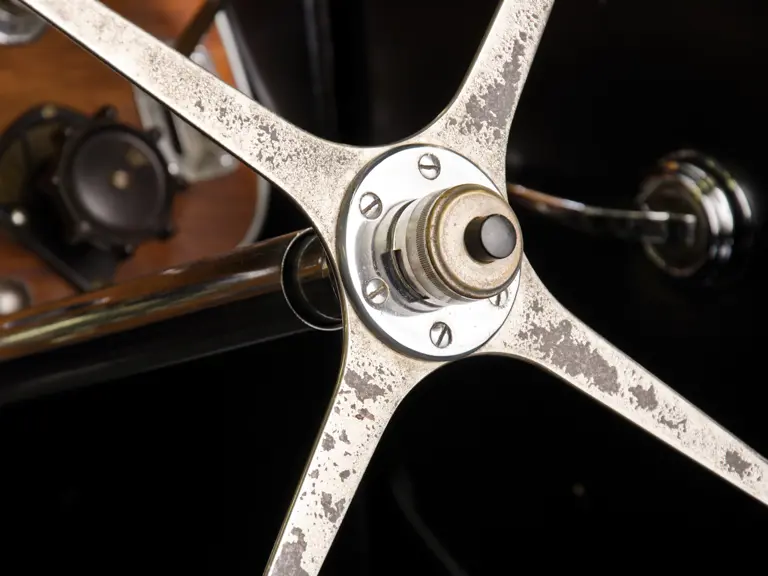
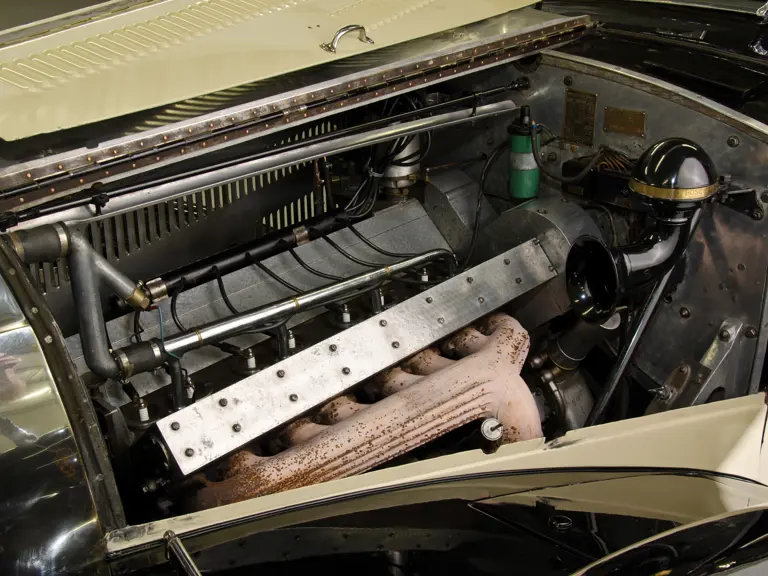

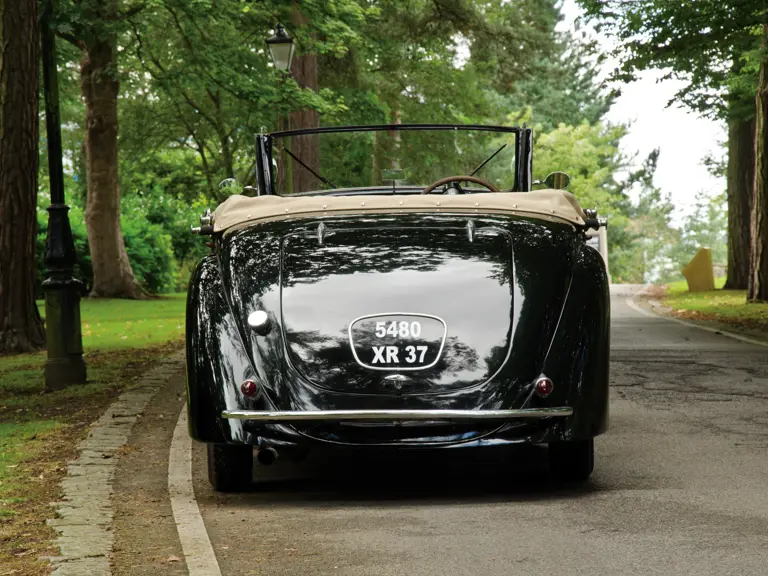
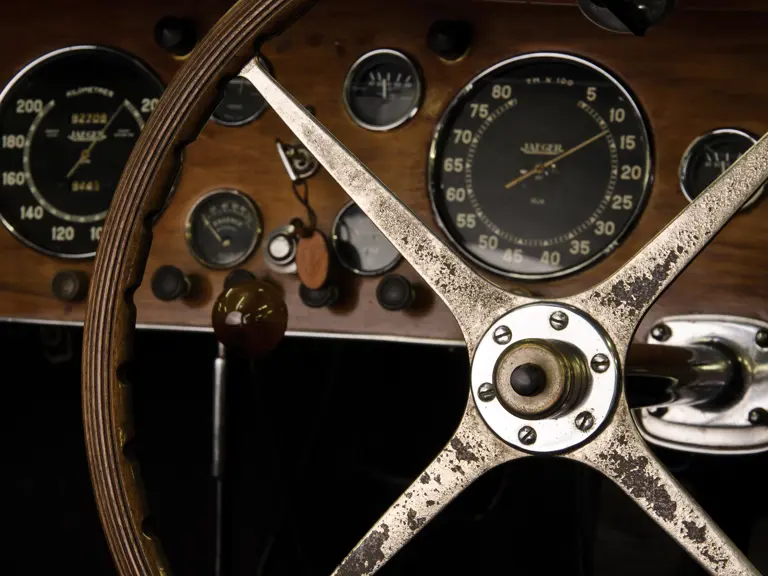
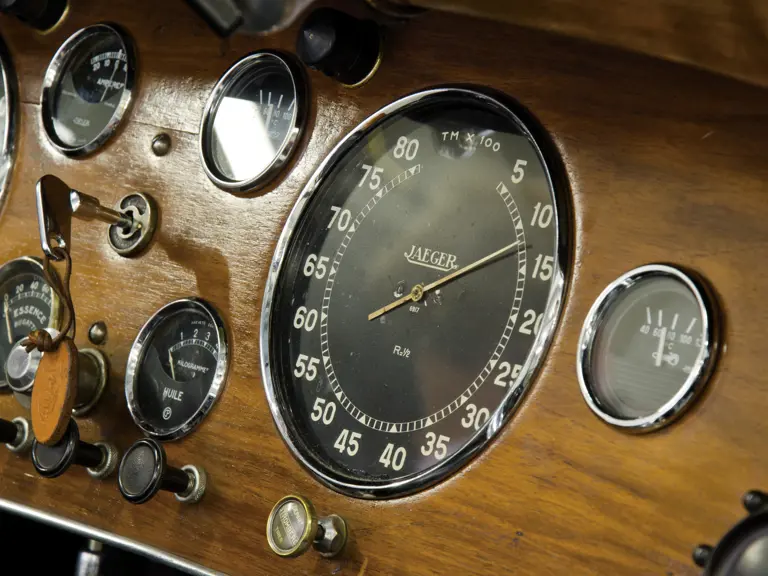

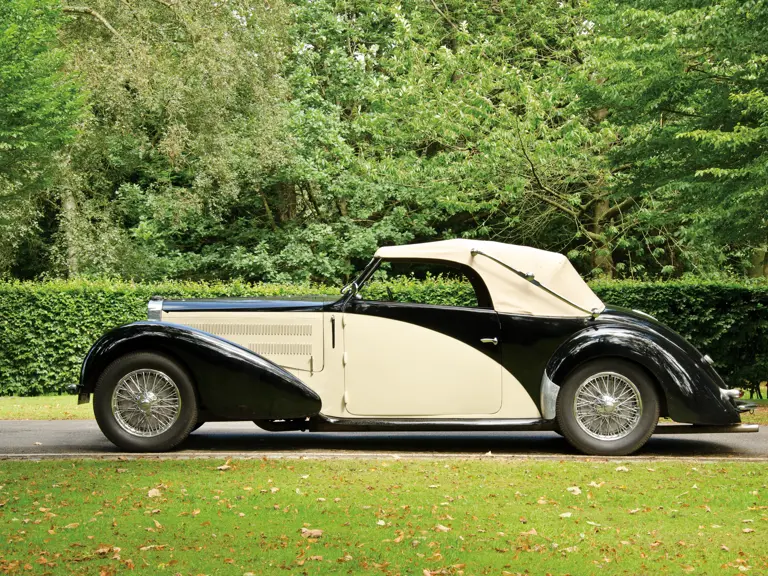
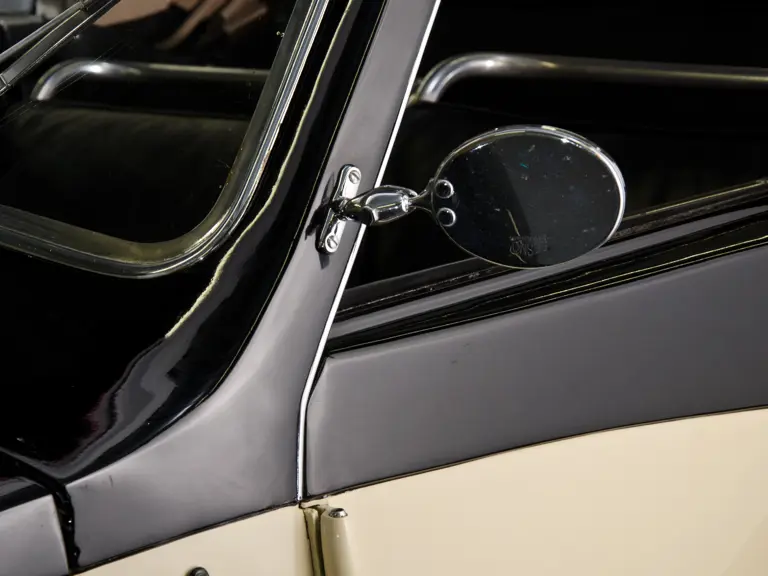

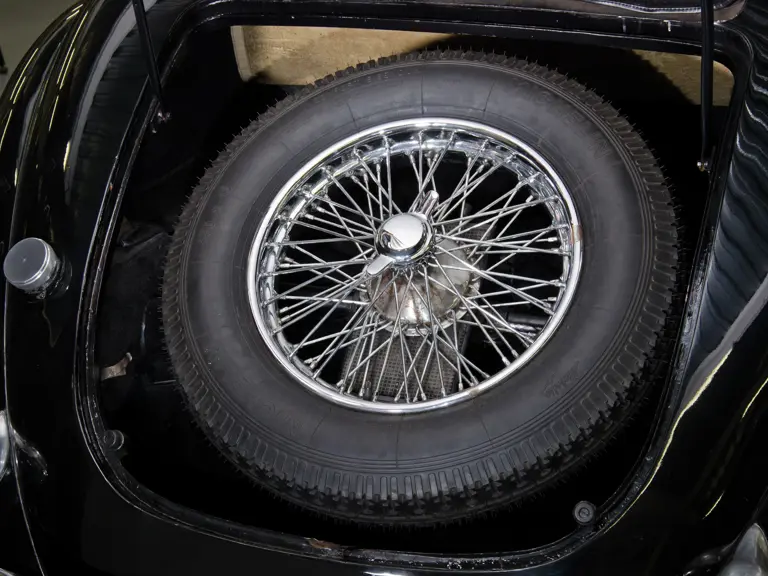

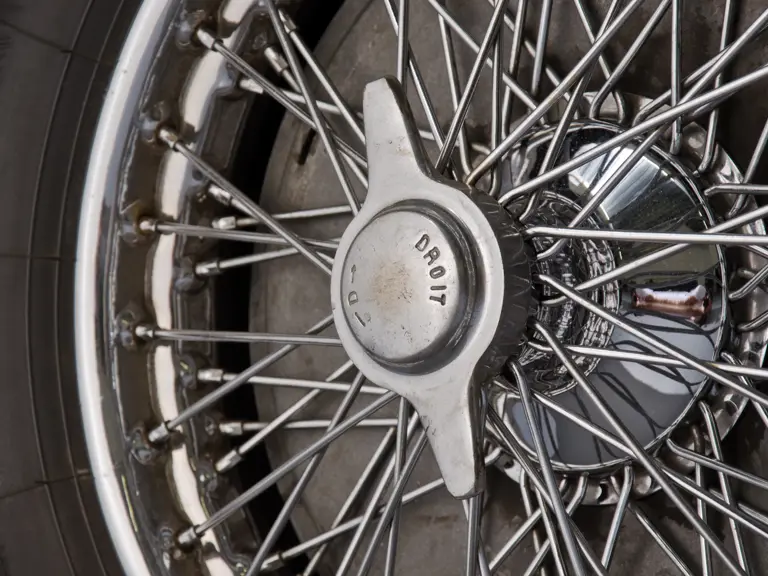
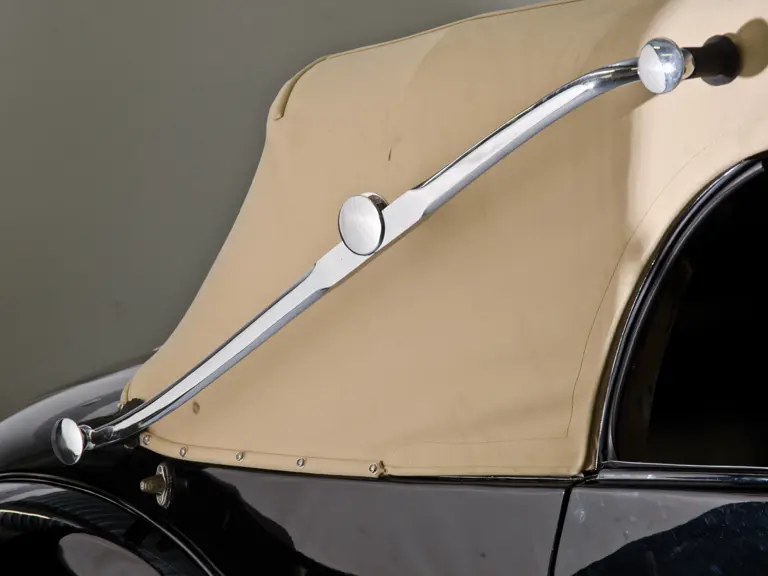
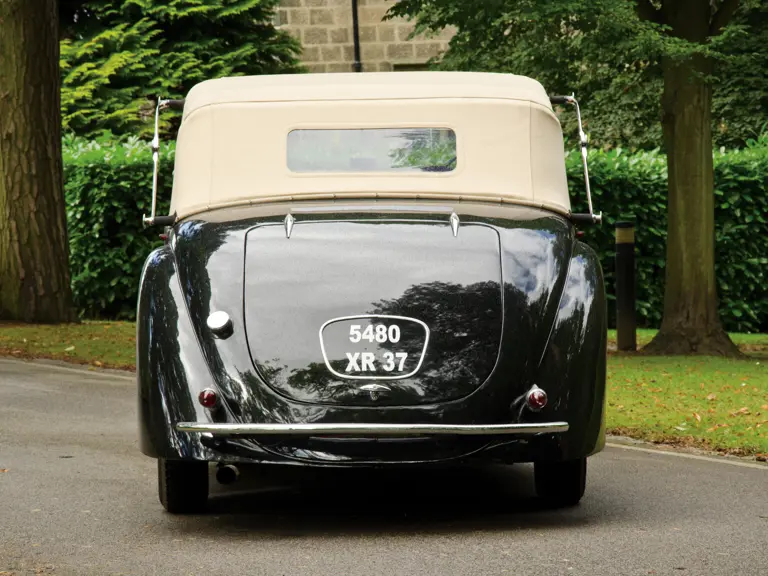
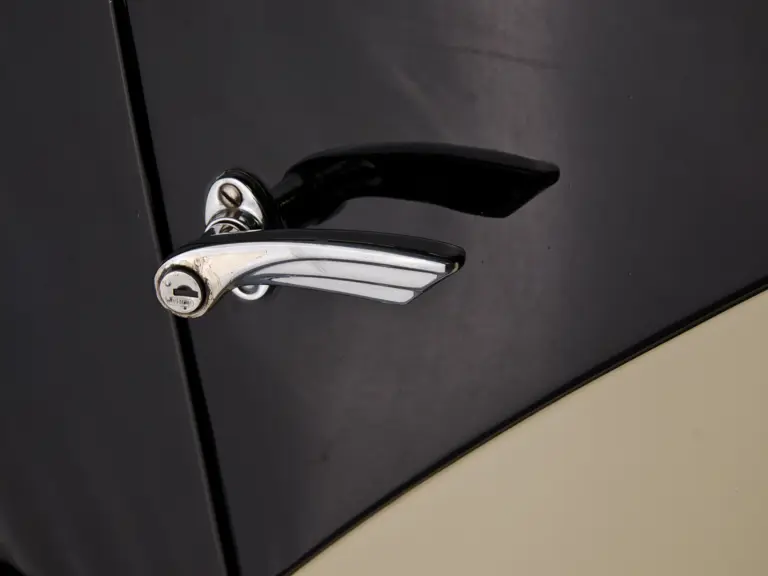
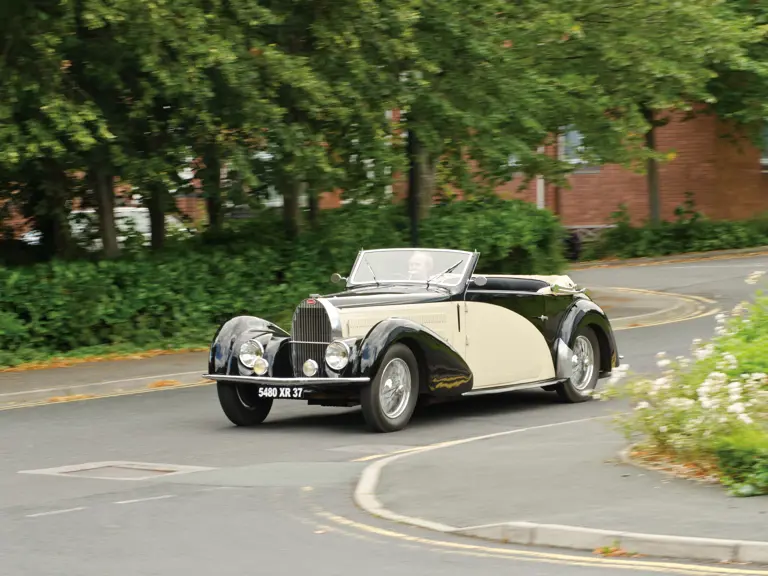
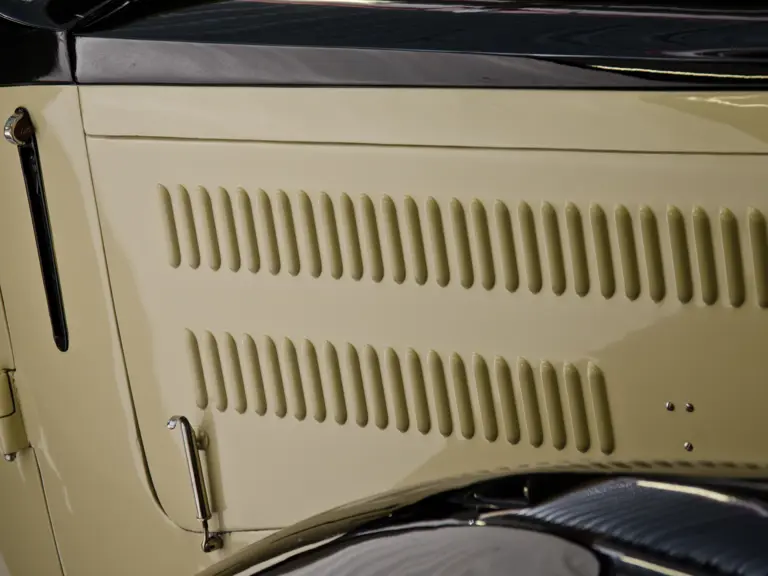
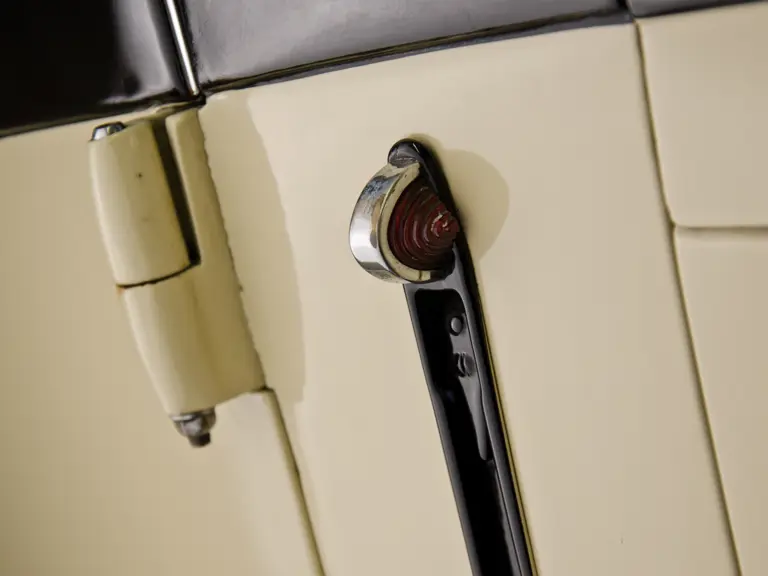
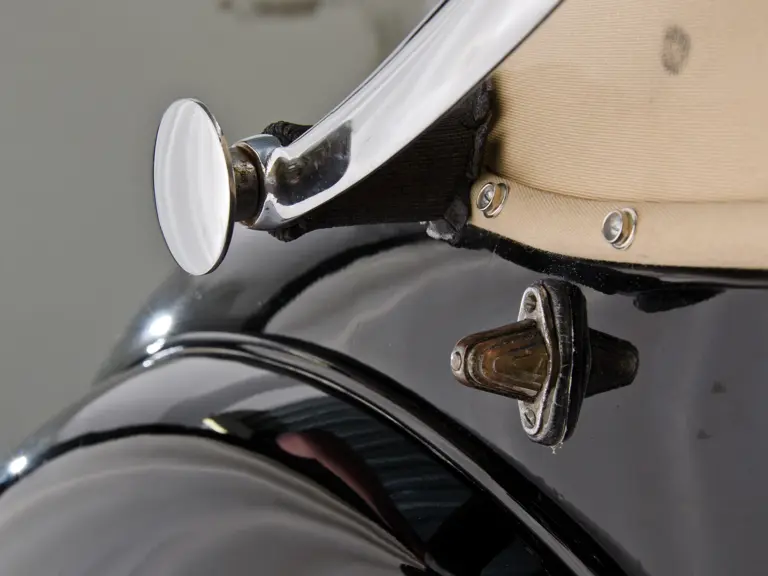


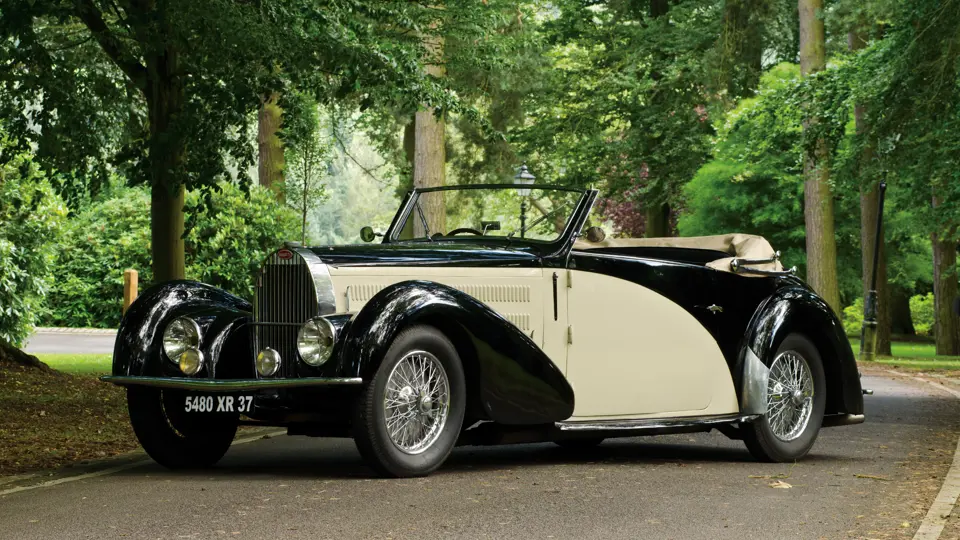
 | London, United Kingdom
| London, United Kingdom
